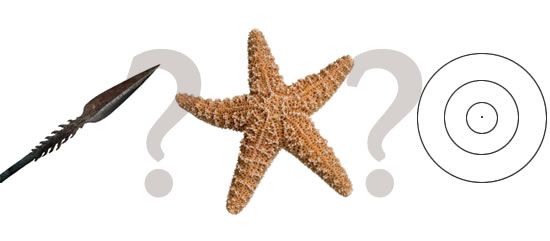COL (R) Charles D. Allen
The Profession of Arms (PoA) Campaign began with much fanfare, but the Community of Practice (CoP) has since wrestled with many important issues during the planning and conduct of the campaign. While there are many implicit assumptions about the Army as a Profession, the PoA White Paper (December 8, 2010) provided the catalyst to explore what it means to be a PoA. In the initial planning sessions with the Commanding General, U.S. Army Training and Doctrine Command (CG TRADOC), the endeavor to define the PoA led to the stalking horse of attributes and the challenge to define the membership within the profession. This short paper is meant to address the latter question of “who is in” and “who is out” of the PoA.
The membership in the Army as a PoA was one of the eight questions posed by CG TRADOC in the PoA White Paper. The genesis of the membership question arose from very pointed questions asked during Unified Quest 2010 to the keynote speaker, General (Ret.) Fred Franks, and the Chief of Staff of the Army, General George Casey. The design of the PoA Campaign with multiple cohorts — junior enlisted Soldiers and officers, mid-grade leaders, senior leaders, and civilians — supports the basic evaluation that they are all indispensible contributors to the Army mission — to fight and win the Nation’s wars. From this evaluation, the determination of how professionals are developed within each cohort became an explicit task. The underlying intellectual challenge of this task is to establish whether or not all these professionals are part of the PoA.
Traditional thinking concerning the PoA is aligned with that as presented by Lieutenant General Sir John Hackett in a compilation of three lectures. In 1986, the U.S. Army endorsed this view by publishing “Officer’s Call: The Profession of Arms,” with a foreword by Army Chief of Staff General Carl Vuono. Hackett stated that the function of the profession of arms “is the ordered application of force in the resolution of a social problem” (p. 3) and therefore the persistent image is of the “man at arms.” In our PoA discussions, it is metaphorically represented by the tip of the spear in Figure 1. Expressions like “management of violence,” “moral hazard,” and “risk of death,” accompany such conversations and tend to identify membership of the profession with those in the combat arms and what is now called maneuver, fires, and effects branches. Such identification excludes a great number of uniformed members of the Army.

Figure 1. Profession of Arms — Starfish Metaphor.
- Cohorts Are Part of the Definition of the Profession.
- Cohorts Are Necessary to Feed the Profession.
- Cohorts Enable Movement and Adaptation.
- Cohorts Provide Stability and Resilience.
- Cohorts Are Regenerative when Consumed.
Given such narrow identification, there is still a need for the three criteria to define a professional as put forth in the White Paper by Dr. Don Snider. Members within a profession must possess unique skills within the jurisdiction of the profession, be certified by the profession, and express/demonstrate an avocation to be part of the profession. The process of becoming a professional can be represented by the concentric circles in Figure 1. For example, the outer circle denotes members of the organization without professional aspirations, while the succeeding inner circles are equivalent to apprentices and journeymen with the innermost circle containing the full-fledged professionals.
The illustrations provided above are incomplete when applied to the Army. As we have heard throughout the PoA campaign, exclusivity has been interpreted as divisive and not helpful in enabling the Army to achieve its mission and core competencies. The PoA campaign revealed that many uniformed and civilian members of the Army believe that without question the Army is a profession composed of multiple groups of professionals.
Therefore, I offer a “Starfish Model” for the PoA. The starfish is an interesting creature that has evolved to survive in varied stressful environments. When one thinks of the starfish, the image in the center of Figure 1 is typical. The starfish is defined as a whole — with its core and its arms. If you take away either, then you don’t have a starfish. The arms are inseparable from the concept of the organism. The arms are needed to provide locomotion, to secure it in turbulent seas, and to capture and provide sustenance. When an arm is damaged, it regenerates and the new arm becomes an important part of the starfish.
Likewise, the multiple cohorts of the Army are essential to the Army as being a profession. While there are many processes to become a professional member within a cohort (i.e., the concentric circles), each cohort cannot stand alone if the Army is to accomplish its mission. The multiple cohorts allow the Army to move and adapt to its environment; cohorts offer stability and resilience in times of turmoil; cohorts sustain the Army with new ideas and energy; and cohorts regenerate the Army. I suggest that the PoA campaign adopt an inclusive definition of the membership of the PoA that recognizes and codifies the essentiality of each cohort and their professional members.
*****
The views expressed in this Of Interest piece are those of the author and do not necessarily reflect the official policy or position of the Department of the Army, the Department of Defense, or the U.S. Government. This piece is cleared for public release; distribution is unlimited.
*****
Organizations interested in reprinting this or other SSI pieces should contact the Publications Department via e-mail at SSI_Publishing@conus.army.mil. All organizations granted this right must include the following statement: “Reprinted with permission of the Strategic Studies Institute Newsletter, U.S. Army War College.”